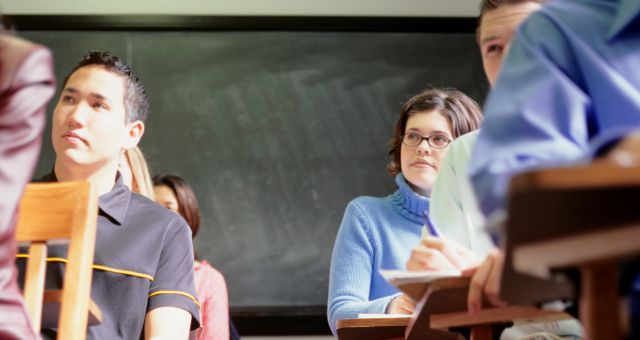Evidence-based teaching seems like the new buzzword in higher education. The phrase appears to mean that we’ve identified and should be using those instructional practices shown empirically to enhance learning. Sounds pretty straightforward, but there are lots of questions that haven’t yet been addressed, such as: How much evidence does there need to be to justify a particular strategy, action, or approach? Is one study enough? What about when the evidence is mixed—in some studies the results of a practice are positive and in others they aren’t? In research conducted in classrooms, instructional strategies aren’t used in isolation; they are done in combination with other things. Does that grouping influence how individual strategies function?
Read more ›CURRENT ARTICLE • December 02
OTHER RECENT ARTICLES
How many explanations do you think you offer during a full week of teaching? Explanations are one of teaching’s most central activities and yet something we rarely think about, in general, or how we do them, specifically. Maybe we can remedy that by considering some features of clear explanations.
Read More ›Good teachers care about their students. We all know that, but sometimes over the course of a long semester, it’s easy to forget just how important it is to show our students we care about them. I was reminded of this importance by two recent studies, which I read and highlighted for the December issue of The Teaching Professor newsletter.
Read More ›A quote from my June 3 blog post appeared in the October 18 issue of the New York Times. I was thrilled until I read the beautifully written op-ed piece. It proposes more lecture and less active learning. My quote was used to illustrate the perspective of those of us who favor active learning.
Read More ›In some types of assignments, it’s the process that’s more important than the product. Journals and online discussion exchanges, even homework problems, are good examples. Students are thinking and learning as they work to sort through ideas, apply content, or figure out how to solve problems. So what the student needs to get credit for is not the product, but the process. And the way most faculty make that determination is by deciding whether the student has made a good faith effort.
Read More ›Iheard someone say today that he’s been teaching for 50 years and never really thought about his teaching. “I just go in there and teach—I don’t think about it.” And here I am having spent something like 45 years thinking a lot about my own teaching and that of everyone else. From my perspective, it’s hard to imagine teaching without thinking about it.
Read More ›As faculty, it seems we are very concerned about cell phones in the classroom. Articles about the problem are popping up everywhere in the pedagogical literature, and they often are the “most-read” and “most-commented” articles listed on various websites. Is student use of electronic devices that pressing of a pedagogical problem? I’ve been wondering if our focus on it isn’t becoming excessive.
Read More ›The list of concerns was compiled from a qualitative analysis of 10 years of graduate teaching assistants’ online discussion posts. The 120 students wrote the posts in a three-credit course that prepared them to teach beginning communication courses. It’s a list that raises some interesting questions. Are the concerns legitimate? They are listed in order of importance. Does that order change as teaching experience accrues? Should it change? Which of these are ongoing concerns, and perhaps, most importantly, how do we deal with the issues raised by the concerns?
Read More ›I once heard class discussions described as “transient instructional events.” They pass through the class, the course, and the educational experiences of students with few lingering effects. Ideas are batted around, often with forced participation; students don’t take notes; and then the discussion ends—it runs out of steam or the class runs out of time. If asked a few days later about the exchange, most students would be hard-pressed to remember anything beyond what they themselves might have said, if that. So this post offers some simple suggestions for increasing the impact of the discussions that occur in our courses.
Read More ›Here’s a strategy you can tuck in your folder of good ideas: a survey tool for assessing student expectations for the course. The survey’s designers believe that knowing what students expect is helpful. They also cite research documenting that discrepancies between teacher and student expectations often exist. So they compiled a short survey that asks students what technology they’re expecting in the course, what learning activities they’re anticipating, what they’re thinking they’ll be graded on, their expectations regarding faculty-student interactions, and how soon they’re expecting faculty to answer emails, post grades, and/or return assignments and be available to meet with them. Here’s a link to the survey: http://bit.ly/1EXVUAi. (Editor's Note: This link is no longer active). Surveys like these are great idea generators. What course expectations do you and your students have?
Read More ›












